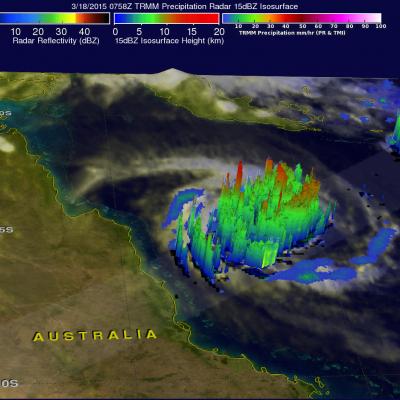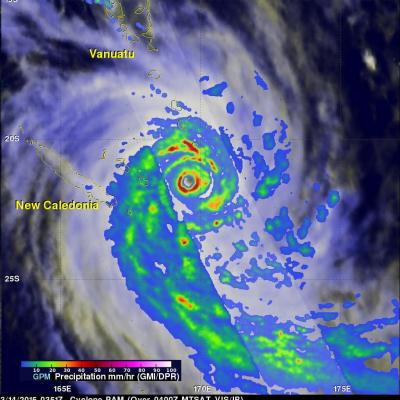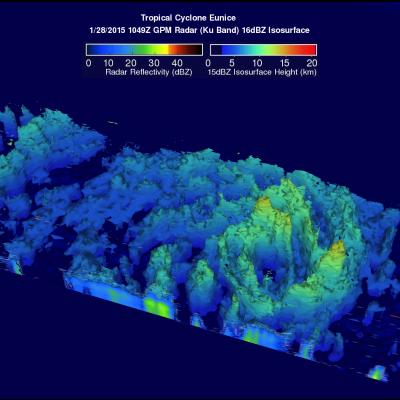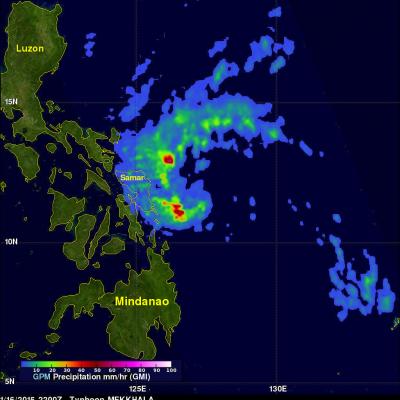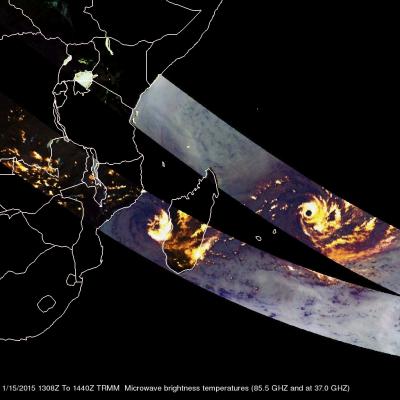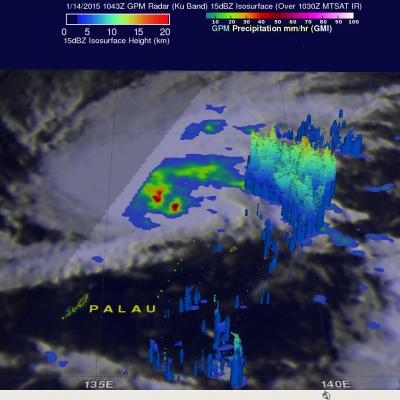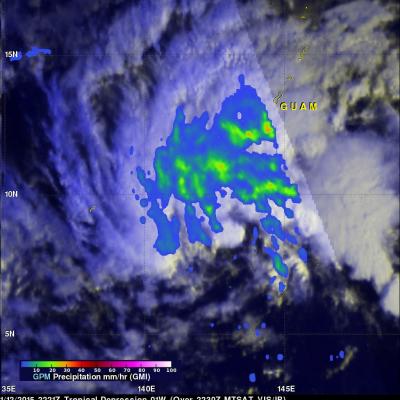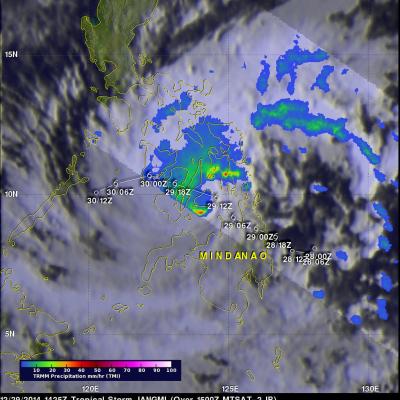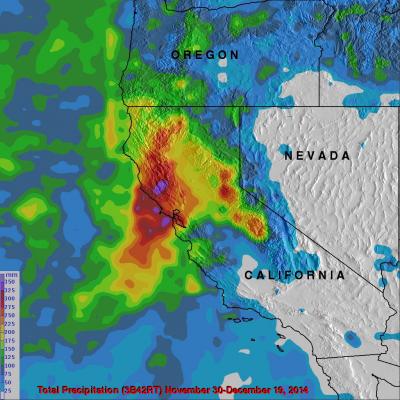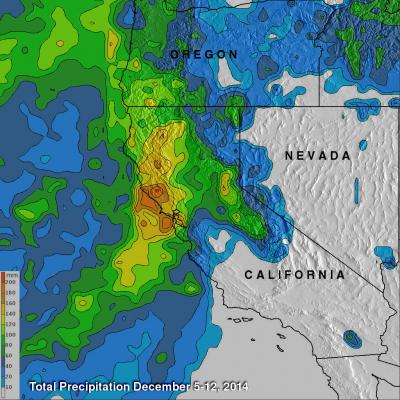Tropical Cyclone Eunice
Tropical cyclone Eunice became the fourth tropical cyclone of the 2015 Southern Indian Ocean season when it formed well east of Madagascar on January 27, 2014. Maximum sustained winds within the tropical cyclone have increased to about 85kts (~98 mph) and Eunice is predicted by the Joint Typhoon Warning Center (JTWC) to continue becoming more powerful as it travels toward the southeast. The GPM (core satellite) flew directly over the eye of newly formed tropical cyclone on January 28, 2015 at 1049 UTC. GPM's Microwave Imager (GMI) found that rain was falling at a rate of only 30.2 mm (about 1


